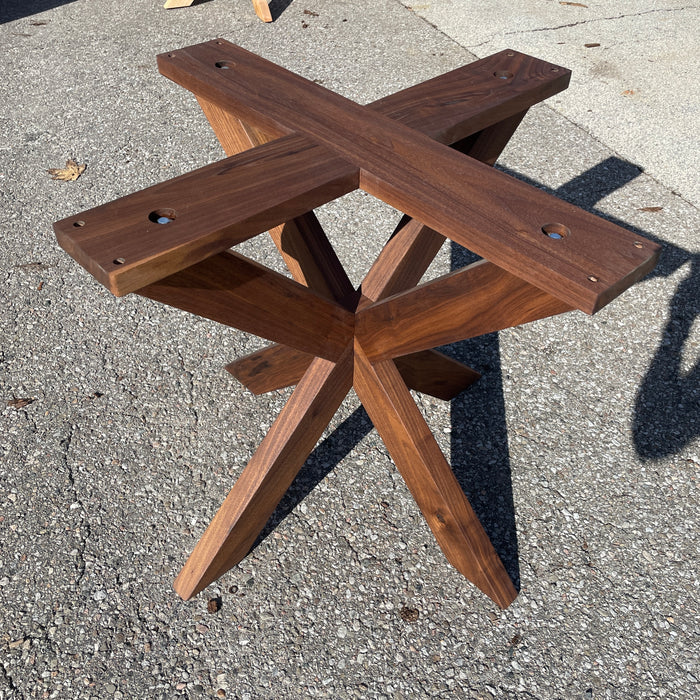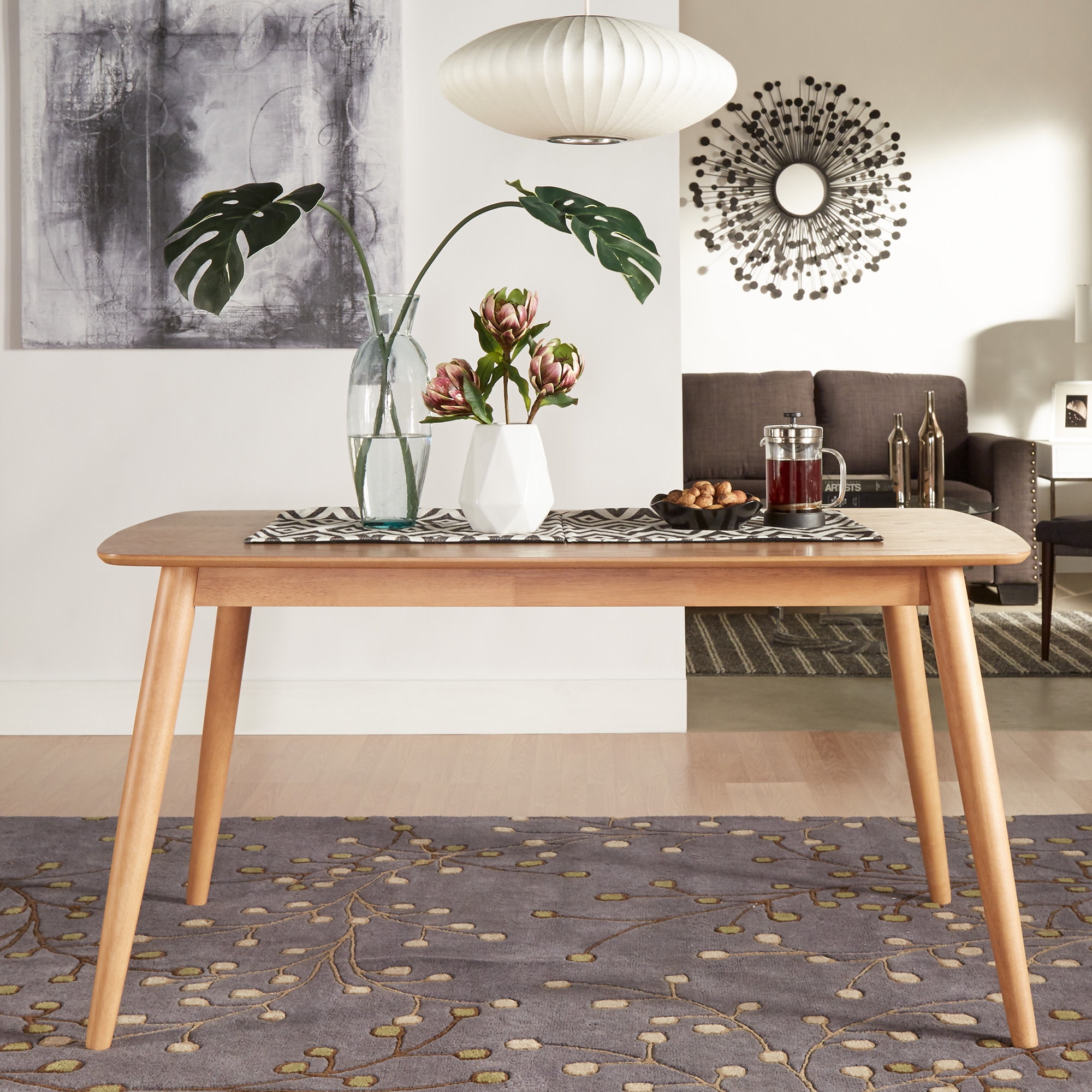Checking Out the Various Kinds Of Table Legs Timber for Your Eating Area
The selection of table legs wood can profoundly affect both the practical and visual top qualities of your dining room. Strong wood alternatives, such as oak and walnut, supply a classic appearance with unparalleled durability, while engineered timber alternatives supply ingenious designs that resemble the richness of all-natural grains. Additionally, the expanding pattern of recovered timber introduces a lasting aspect that attract eco aware customers. As we explore these different choices, it becomes necessary to consider not only the aesthetic appeal but likewise the sensible implications of each product choice. What variables should lead your choice?
Solid Timber Options

Unlike engineered materials, solid wood is less prone to bending and damage over time when effectively kept. Each item of solid timber is special, showcasing private attributes that include to the appeal and character of the dining table.
In addition, solid wood can be completed in various ways, ranging from all-natural oils to tarnished finishes, enabling homeowners to personalize their furnishings to match their decor. In summary, choosing solid wood for eating table legs not just ensures architectural stability but additionally enhances the visual appeal of the eating location, making it a worthwhile investment for any home.
Engineered Wood Alternatives

Plywood, built from several layers of wood veneer, is especially strong and secure, making it a superb choice for eating table legs. Its split make-up permits it to withstand changes in humidity and temperature level better than traditional solid timber. MDF, on the other hand, uses a smooth surface area for paint or veneering, making it possible for developers to accomplish a polished look while keeping structural honesty.
When picking crafted wood alternatives, it is crucial to think about the designated use and preferred aesthetic. These materials not just improve the functionality of dining rooms but likewise enable for better design adaptability, guaranteeing that standard and modern styles can exist together harmoniously.
Reclaimed Wood Features
Recovered timber supplies an one-of-a-kind blend of sustainability and character, making it an increasingly popular choice for dining table legs. Sourced from old barns, manufacturing facilities, and various other frameworks, recovered wood symbolizes a background that new materials merely can not replicate. Each item brings its own tale, noted by unique imperfections, knots, and varying grain patterns, which add to a table's distinct visual allure.
Along with its visual charm, recovered wood is an eco-friendly alternative. By repurposing formerly utilized products, it minimizes the demand for new lumber, therefore helping to conserve woodlands and lessen waste. This lines up with an expanding consumer preference for sustainable practices in decor.
Furthermore, reclaimed timber is usually a lot more sturdy than newly collected wood as a result of its age. The natural drying out procedure that recovered timber goes through lead to a denser and more powerful material, making it much less susceptible to bending and splitting. This enhances the long life of dining tables, enabling them to endure the roughness of daily use.
Softwood vs. Wood
When choosing eating table legs, comprehending the differences in between softwood and hardwood is critical for accomplishing both aesthetic and practical objectives. Softwoods, stemmed from coniferous trees, such as pine and cedar, are identified by their lighter weight and Read Full Article ease of adjustment. They generally show an even more rustic look, making them suitable for casual or country-style dining spaces. Softwoods are typically much less sturdy than woods, which can be a factor to consider for family members or those looking for longevity in their furnishings.
On the other hand, hardwoods, sourced from deciduous trees like maple, oak, and cherry, are renowned for their thickness, toughness, and resilience. The elaborate grain patterns and abundant colors of hardwoods give a timeless and sophisticated visit here charm, making them optimal for formal dining settings. While woods often tend to be more pricey and larger, their strength against deterioration usually validates the investment.
Inevitably, the selection in between softwood and wood for eating table legs should align with your style vision, usage needs, and spending plan, making sure that your dining space mirrors your personal design while staying useful in time.

Therapies and finishes
The aesthetic charm and longevity of find out this here eating table legs can be substantially boosted via various coatings and therapies. These procedures not just shield the wood from damages however additionally raise its appearance, allowing it to match diverse indoor designs.
One common therapy is tarnishing, which permeates the wood and enhances its all-natural grain while including color. Discolorations supply a rich, stylish look, making it possible for property owners to match their furniture with existing style. Conversely, clear finishes such as polyurethane or varnish create a safety layer without modifying the wood's original tone, making certain longevity versus deterioration.
In addition, all-natural oils, like tung or linseed oil, nourish the timber and provide a subtle luster, all while being environmentally friendly. These oils allow the surface area to breathe, stopping wetness accumulation and possible warping.
For those looking for a rustic appeal, distressed or weather-beaten coatings can be put on develop an aged look, including character to the piece. Eventually, the choice of coatings and therapies relies on individual preference, preferred appearances, and the certain timber kind, making it important to take into consideration these aspects when selecting dining table legs for your area.
Verdict
To conclude, the choice of dining table leg products substantially affects both the visual and useful facets of a dining room. Strong woods, engineered choices, and reclaimed options each offer distinct benefits, dealing with different choices and requirements. Understanding the differences in between hardwoods and softwoods, in addition to proper surfaces and therapies, enables informed decision-making. Inevitably, the option of timber type need to straighten with preferred design, sturdiness, and environmental factors to consider, improving the general eating experience.
The option of eating table legs timber can greatly affect both the aesthetic and useful top qualities of your dining space - Dining Table Legs Wood. Solid timber choices, such as oak and walnut, provide a timeless look with unequaled longevity, while engineered wood options offer innovative layouts that resemble the splendor of natural grains. Strong timber supplies an ageless top quality that can boost the total layout of an eating space. Each item of solid timber is one-of-a-kind, showcasing specific characteristics that include to the appeal and character of the eating table
In addition, redeemed wood is frequently extra durable than recently gathered timber due to its age.